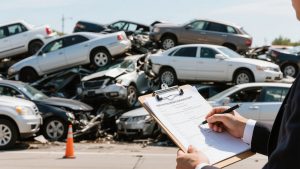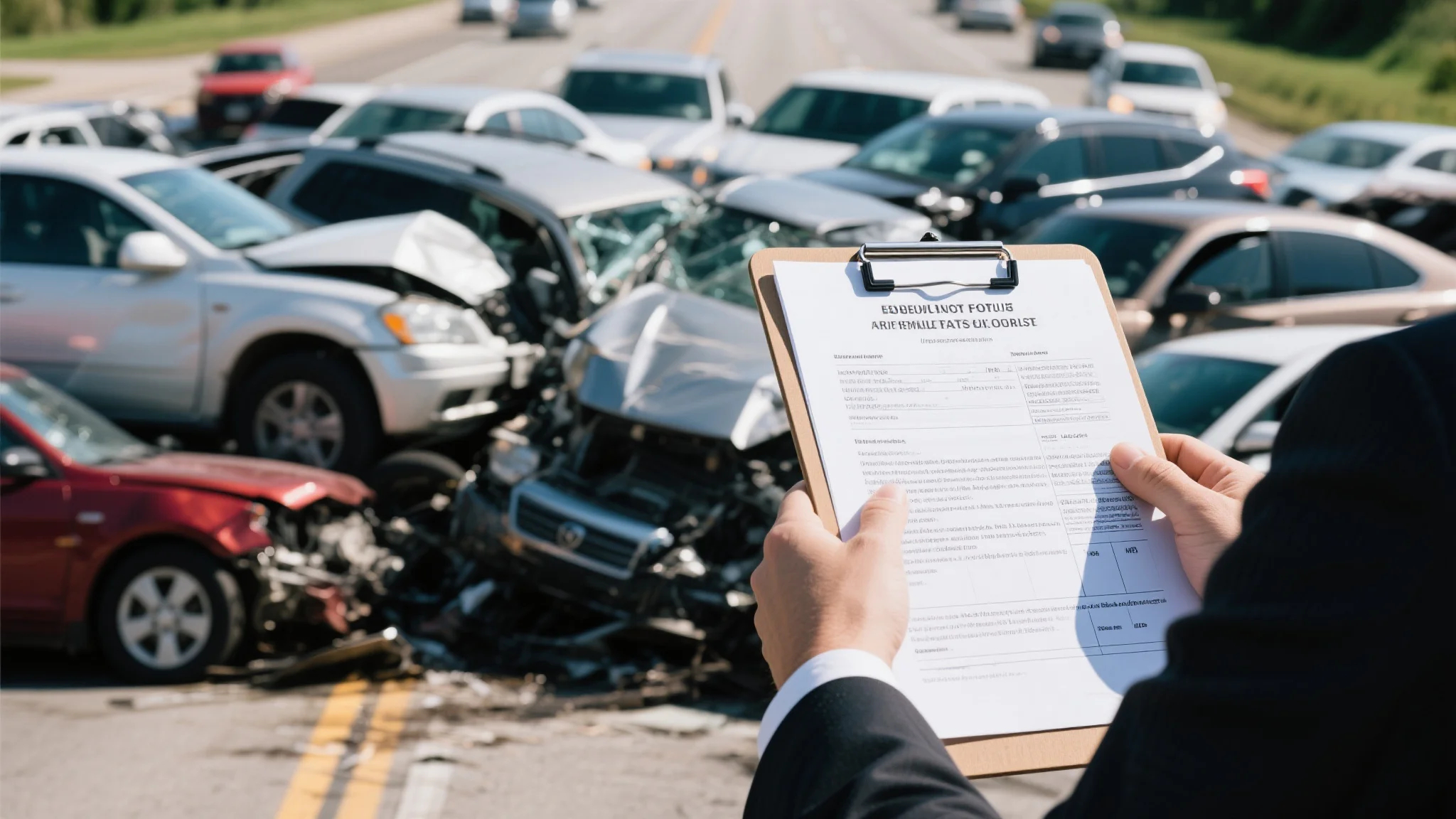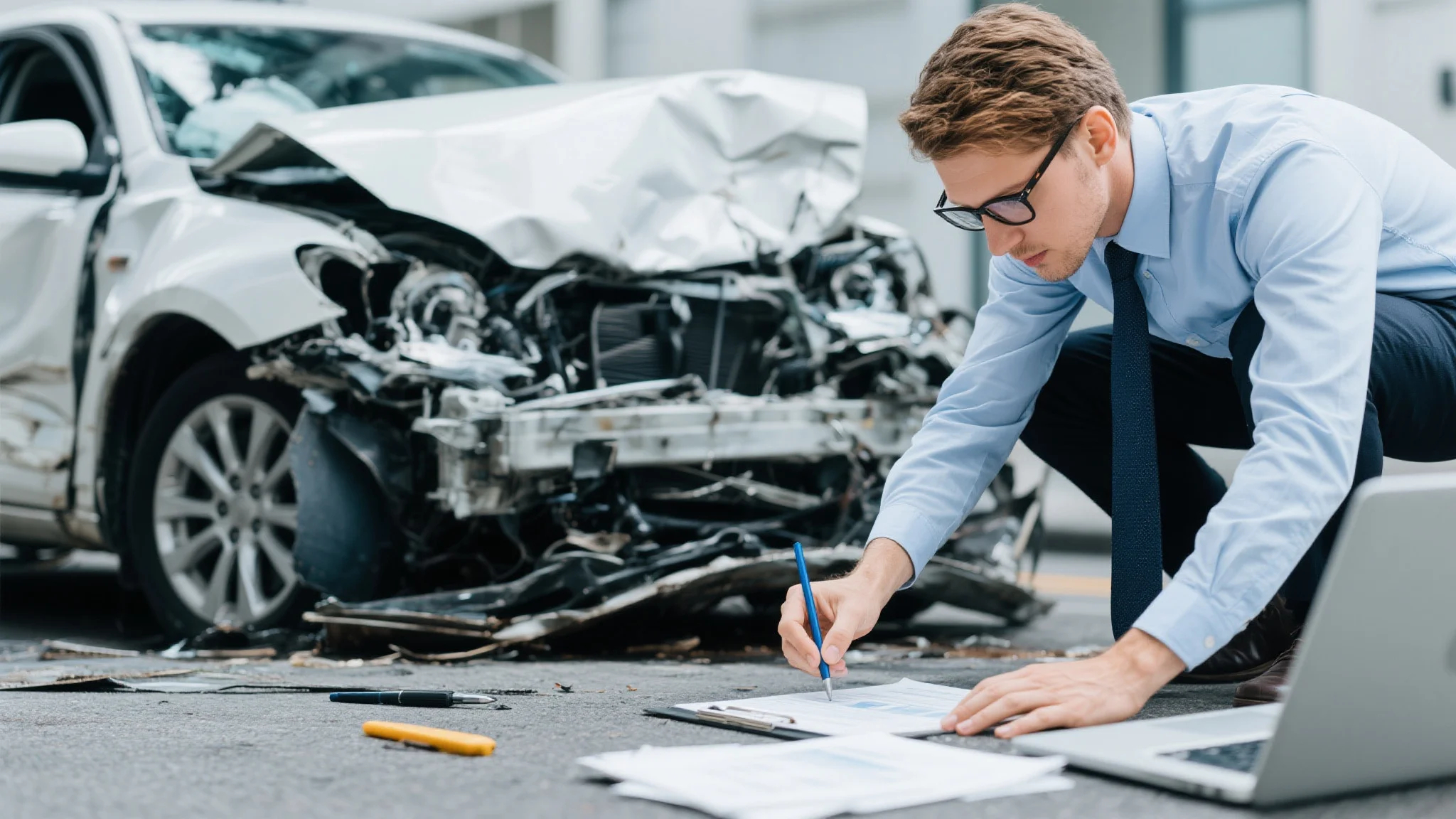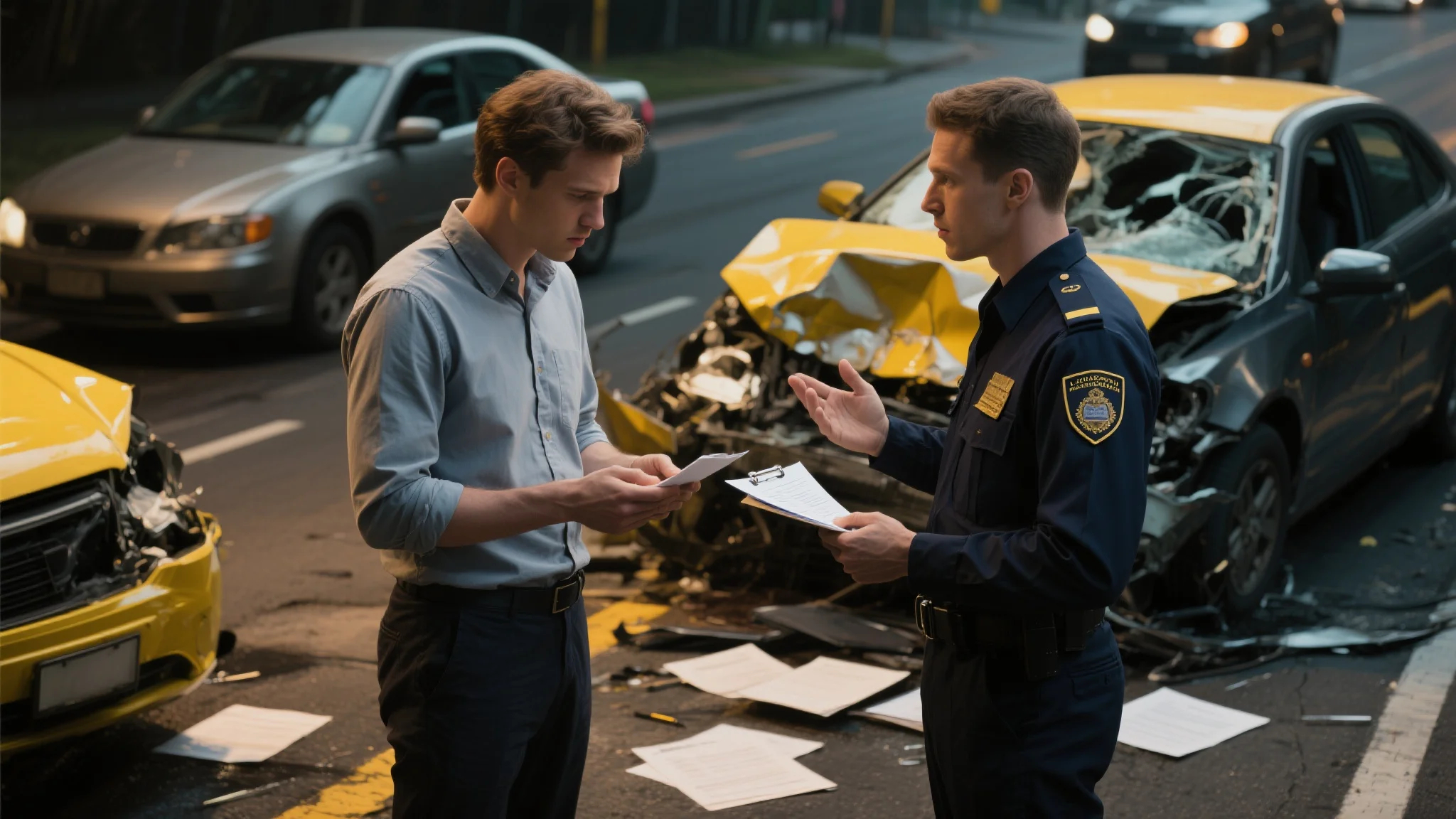Multi-vehicle pileups represent some of the most challenging personal injury cases in the legal system, involving complex chains of causation, multiple insurance companies, and intricate liability determinations that can make or break a victim’s claim for compensation. These catastrophic events often occur on highways during adverse weather conditions, in construction zones, or when visibility is compromised, resulting in a domino effect where one initial collision triggers a series of subsequent impacts involving numerous vehicles. The complexity of determining fault in such scenarios requires sophisticated legal strategies and extensive investigation techniques that only experienced fault proving lawyers can effectively implement.
Understanding the Intricate Web of Liability in Chain Reaction Collisions
The fundamental challenge in multi-vehicle accident cases lies in establishing the precise sequence of events and identifying which driver or drivers bear responsibility for initiating the chain reaction that led to the pileup. Unlike simple two-vehicle collisions where fault determination is often straightforward, multi-vehicle accidents involve multiple points of impact, varying degrees of negligence among different drivers, and complex interactions between human error, environmental factors, and mechanical failures. Each collision within the pileup must be analyzed separately while also considering its relationship to the overall sequence of events, creating a three-dimensional puzzle that requires meticulous reconstruction and analysis.
The legal doctrine of proximate causation becomes particularly complex in multi-vehicle scenarios, as attorneys must establish not only that a particular driver’s actions caused the initial collision but also that the subsequent damages were a foreseeable result of that initial negligent act. This analysis becomes even more complicated when intervening acts by other drivers contribute to the severity of the pileup, raising questions about whether these subsequent actions break the chain of causation or represent foreseeable consequences of the original negligent act. Courts have developed various tests for determining proximate causation in multi-vehicle cases, including the “but for” test, the substantial factor test, and the foreseeability analysis, each of which requires different types of evidence and expert testimony to support.
Insurance coverage issues in multi-vehicle pileups create additional layers of complexity that can significantly impact the recovery available to injured parties. When multiple vehicles are involved, there are typically multiple insurance policies in play, each with different coverage limits, deductibles, and exclusions that must be carefully analyzed and coordinated. The order in which claims are presented to different insurance companies can affect the total recovery available, particularly when policy limits are insufficient to cover all damages. Some insurance companies may attempt to shift responsibility to other carriers, leading to lengthy disputes that can delay compensation for injured victims while legal fees mount and evidence becomes stale.
The concept of comparative negligence takes on heightened importance in multi-vehicle cases, as multiple parties may bear varying degrees of responsibility for the overall accident. Some jurisdictions follow pure comparative negligence rules, where a plaintiff’s recovery is reduced by their percentage of fault but not eliminated entirely, while others follow modified comparative negligence rules that bar recovery if the plaintiff’s fault exceeds a certain threshold. Understanding these jurisdictional differences and how they apply to multi-vehicle scenarios is crucial for developing effective litigation strategies and advising clients about their realistic recovery prospects.
Environmental and road condition factors often play significant roles in multi-vehicle pileups, creating additional defendants and complicating liability analysis. Government entities responsible for road maintenance, construction companies working in the area, and even weather services that failed to provide adequate warnings may bear some responsibility for creating conditions that contributed to the accident. These potential defendants often have sovereign immunity protections or other legal defenses that require specialized knowledge to overcome, and their involvement can significantly extend the litigation timeline while potentially increasing the total recovery available to injured parties.
The timing and sequence of impacts within a multi-vehicle pileup can dramatically affect the types and severity of injuries sustained by different occupants, requiring detailed biomechanical analysis and expert testimony to establish causation between specific impacts and particular injuries. Passengers in vehicles that were struck multiple times may have injuries from different collisions that must be separately analyzed and attributed to different defendants. This complexity requires coordination between medical experts, accident reconstruction specialists, and biomechanical engineers to create a comprehensive picture of how each impact contributed to the overall injury pattern.
Vehicle safety systems and their performance during multi-vehicle accidents have become increasingly important factors in liability determination and damage calculation. Modern vehicles equipped with automatic emergency braking, collision avoidance systems, and other safety technologies may have different liability profiles than older vehicles without these features. Expert analysis of these systems’ performance during the accident can reveal whether they functioned properly, whether their failure contributed to the severity of the pileup, and whether manufacturers bear any responsibility for defective safety systems that failed to prevent or mitigate the collision sequence.

Advanced Investigation Techniques and Evidence Preservation Strategies
The investigation of multi-vehicle pileups requires immediate and comprehensive evidence preservation efforts that go far beyond the typical single-vehicle accident case. Physical evidence from the accident scene deteriorates rapidly, particularly on busy highways where traffic must be restored quickly, making it essential for legal teams to mobilize investigative resources within hours of the accident. This includes photographing vehicle positions, measuring skid marks and debris patterns, documenting road conditions and weather factors, and preserving electronic data from vehicles’ event data recorders before this crucial information is lost or overwritten.
Modern vehicles contain sophisticated electronic systems that record detailed information about the moments leading up to and during a collision, including speed, braking patterns, steering inputs, and safety system activations. Extracting and analyzing this data requires specialized equipment and expertise, but it can provide invaluable objective evidence about each driver’s actions and the sequence of events during the pileup. However, this data is often volatile and may be lost if vehicles are not properly preserved, making it essential for attorneys to obtain court orders for evidence preservation and to work with qualified experts who can properly extract and interpret this electronic evidence.
Witness testimony in multi-vehicle cases presents unique challenges, as the chaotic nature of pileups often means that no single witness observed the entire sequence of events. Different witnesses may have seen different portions of the accident from various vantage points, requiring careful coordination and analysis to piece together a complete picture of what occurred. Additionally, the traumatic nature of multi-vehicle accidents can affect witness memory and perception, making it crucial to obtain detailed statements as quickly as possible while memories are fresh and before witnesses have been influenced by media coverage or discussions with other parties.
Surveillance camera footage has become increasingly valuable in multi-vehicle accident investigations, as many highways, intersections, and commercial properties are equipped with cameras that may have captured portions of the accident sequence. However, this footage is often automatically overwritten after short periods, making it essential for legal teams to quickly identify potential sources and obtain preservation orders. Traffic cameras, commercial security systems, dashboard cameras from uninvolved vehicles, and even cell phone videos from bystanders can all provide crucial evidence about the accident sequence and the actions of different drivers.
Accident reconstruction in multi-vehicle cases requires sophisticated computer modeling and simulation techniques that can account for the complex interactions between multiple vehicles, varying road conditions, and different impact scenarios. Expert reconstructionists must analyze the physics of each collision within the pileup, considering factors such as vehicle weights, speeds, impact angles, and the effects of secondary collisions on the overall accident dynamics. This analysis often requires the use of specialized software and extensive calculations that can demonstrate how small changes in driver behavior might have prevented or mitigated the severity of the pileup.
The role of complex claim strategies becomes particularly important when dealing with the multiple insurance companies and legal teams involved in multi-vehicle cases. Coordinating discovery efforts, sharing expert witness costs, and developing unified theories of liability can help reduce litigation expenses while strengthening the overall case presentation. However, conflicts of interest between different plaintiffs may arise when their interests diverge, requiring careful ethical consideration and potentially separate representation for different parties.
Medical evidence coordination becomes exponentially more complex in multi-vehicle cases where multiple parties may have similar injuries from the same accident sequence. Establishing which specific impacts caused particular injuries requires detailed medical analysis and expert testimony that can differentiate between injuries from different collisions within the same accident. This analysis is crucial for properly allocating damages among different defendants and ensuring that each responsible party pays their fair share of the total compensation owed to injured victims.
Technology integration in modern accident investigation includes the use of drones for aerial photography, 3D laser scanning for precise scene documentation, and virtual reality systems for jury presentation of complex accident scenarios. These advanced technologies can provide more accurate and compelling evidence than traditional investigation methods, but they also require significant investment in equipment and training. The decision to employ these technologies must be balanced against their cost and the potential impact on case outcomes, particularly in cases where liability is disputed and the evidence may be crucial to establishing fault.
Strategic Litigation Approaches for Maximum Recovery
Developing effective litigation strategies for multi-vehicle pileup cases requires a comprehensive understanding of how different legal theories and procedural approaches can be combined to maximize recovery for injured clients. The complexity of these cases often necessitates the use of multiple legal theories simultaneously, including negligence, strict liability, premises liability, and product liability claims that may apply to different defendants involved in the accident sequence. Each theory requires different types of evidence and expert testimony, making case preparation significantly more complex and expensive than typical personal injury litigation.
Joint and several liability rules can significantly impact recovery strategies in multi-vehicle cases, as they determine whether defendants are responsible only for their proportionate share of damages or whether they can be held liable for the entire judgment if other defendants are unable to pay. Understanding these rules and how they apply in different jurisdictions is crucial for developing effective settlement strategies and determining which defendants to prioritize in litigation efforts. In some cases, it may be more advantageous to focus on defendants with deeper pockets or better insurance coverage, even if their percentage of fault is relatively small.
Settlement coordination among multiple plaintiffs requires careful strategic planning to avoid situations where early settlements by some parties reduce the recovery available to others or create conflicts between different victims of the same accident. Class action or consolidated litigation may be appropriate in some multi-vehicle cases, particularly when there are numerous plaintiffs with similar injuries and damages. However, the individual nature of personal injury claims often makes individual representation more appropriate, requiring coordination agreements between different attorneys to share costs and information while protecting each client’s individual interests.
Expert witness coordination becomes particularly challenging in multi-vehicle cases where multiple parties may need similar expert testimony but have conflicting interests regarding liability allocation. Sharing expert witness costs can reduce litigation expenses, but it may also create conflicts when experts’ opinions favor some parties over others. Developing strategies for expert witness selection, preparation, and presentation that serve all parties’ interests while maintaining the integrity of the expert’s opinions requires careful planning and coordination among different legal teams.
Trial presentation strategies for multi-vehicle cases must account for the complexity of the evidence and the difficulty that juries may have in understanding the sequence of events and liability allocation. Visual aids, including computer animations, scale models, and timeline presentations, become essential tools for helping juries understand complex accident scenarios. However, these presentations must be carefully designed to avoid overwhelming jurors with too much information while ensuring that all relevant evidence is properly presented and explained.
Insurance coverage analysis and coordination requires sophisticated understanding of how different policies interact and how coverage limits can be maximized across multiple defendants. This includes analyzing primary and excess coverage, understanding coordination of benefits provisions, and identifying potential coverage gaps that might affect recovery. In some cases, it may be necessary to pursue bad faith claims against insurance companies that unreasonably delay or deny coverage, adding another layer of complexity to the litigation strategy.
Damage calculation in multi-vehicle cases often involves complex economic analysis to determine how different impacts and injuries have affected each plaintiff’s earning capacity, medical expenses, and quality of life. This analysis must account for pre-existing conditions, the cumulative effect of multiple injuries, and the interaction between different types of damages. Economic experts, life care planners, and vocational rehabilitation specialists may all be necessary to properly quantify the full extent of damages and present compelling evidence to support damage awards.
Alternative dispute resolution methods, including mediation and arbitration, can be particularly valuable in multi-vehicle cases where the complexity and expense of litigation might otherwise make resolution difficult. However, these processes must be carefully structured to account for the multiple parties and competing interests involved. Multi-party mediation requires skilled mediators who understand the dynamics of complex personal injury cases and can help facilitate resolution among parties with potentially conflicting interests.
The long-term strategic considerations in multi-vehicle litigation include the potential for appeals, the enforcement of judgments against multiple defendants, and the ongoing management of structured settlements or other complex payment arrangements. These cases often involve significant damages and multiple responsible parties, making post-trial collection efforts more complex than typical personal injury cases. Planning for these contingencies during the litigation phase can help ensure that successful outcomes translate into actual recovery for injured clients, making the expertise of experienced fault proving lawyers essential for navigating these complex legal challenges and achieving optimal results for victims of multi-vehicle accidents.



